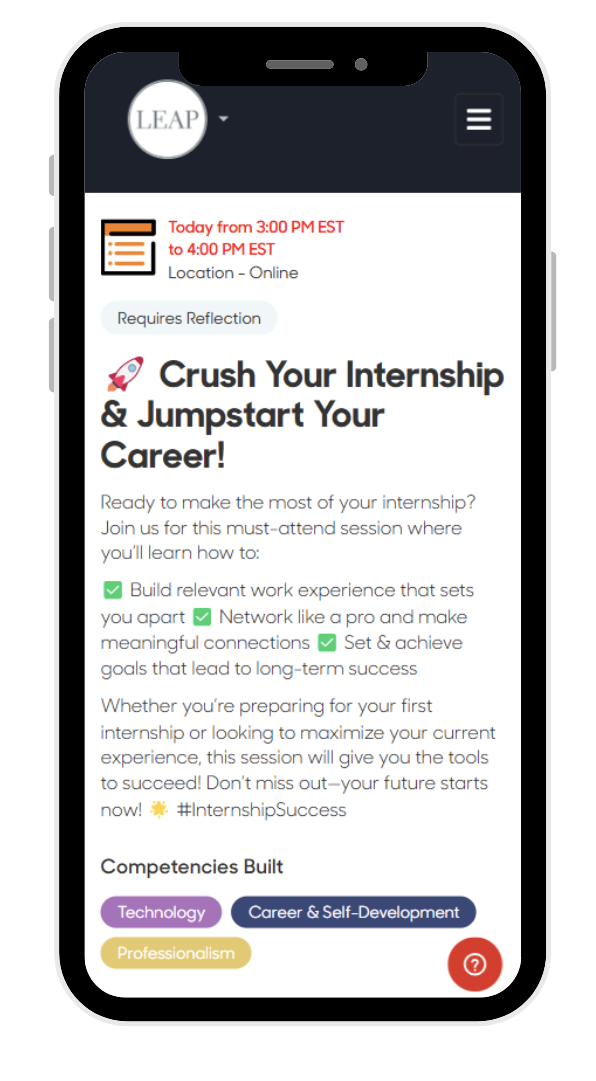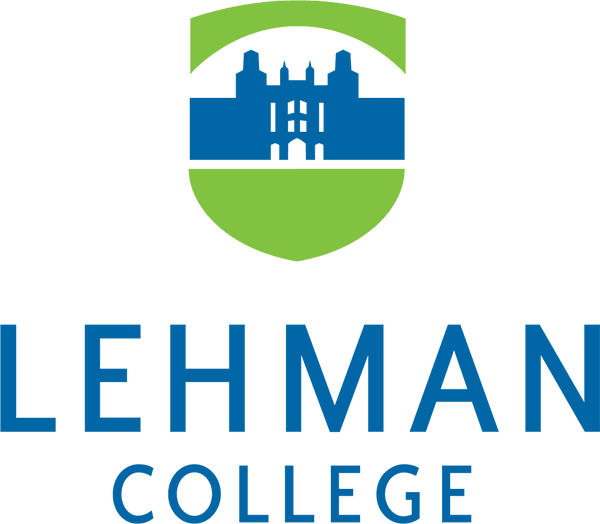Before implementing Suitable, the Lehman College School of Business relied on a patchwork of informal methods to track student engagement. These systems lacked consistency and structure, making it difficult to capture the full impact of the school’s co-curricular offerings. Without real-time data or a unified platform, the school struggled to identify which students were participating, which events were driving outcomes, or where to intervene in a timely manner. The disconnect between classroom learning and real-world skill development created a gap that leadership recognized as critical to address. In addition, limited visibility into student progress made it challenging to tie co-curricular efforts to broader institutional goals, including accreditation standards and employer readiness.
Description
Lehman College School of Business launched the LEAP program in Fall 2023 to bridge classroom learning with real-world career skills. As the only public business school in the Bronx, Lehman recognized the need for a centralized, data-driven platform to track co-curricular engagement and selected Suitable after a careful vetting process. LEAP’s mobile-friendly design, gamified features, and integration into coursework quickly drove adoption. Within two semesters, students were earning digital badges aligned with NACE competencies, and faculty were leveraging real-time data to shape programming. Looking ahead, Lehman aims to grow engagement, strengthen employer connections, and support AACSB accreditation goals.

This is a form

This is a form

This is a form
About the School
Lehman College, located in the Bronx, is the only four-year public college in the borough and serves as a flagship institution within the City University of New York (CUNY), the nation’s largest public urban university system. With over 13,000 students enrolled and a population composed of 70 percent transfer students, Lehman plays a vital role in providing accessible, high-quality education. The School of Business, launched in July 2022, stands out as the only public business school in the Bronx. From its inception, the school has been dedicated to preparing students for the workforce through experiential learning and a curriculum aligned with industry standards. Faculty and leadership alike are committed to ensuring graduates leave with not just academic credentials but the practical competencies required for long-term career success.
Challenges Before Suitable
Life with Suitable
In Fall 2023, the School of Business launched LEAP (Learn, Empower, Ascend, Progress), a co-curricular program designed to build essential competencies among declared business majors. The decision to integrate Suitable as the platform behind LEAP followed a careful exploration process. Dean Hurley was introduced to Suitable at a conference where Bucknell University showcased its successful implementation. This led to further conversations with peer institutions such as Bucknell and Loyola Marymount, followed by a series of webinars that demonstrated the platform’s potential. With discretionary funding available, the school proceeded with implementation, completing a 6-to-8-week onboarding process with Suitable’s Client Success Team.
The rollout focused on making the platform approachable for both students and faculty. The LEAP program launched with low-barrier activities like resume workshops, LinkedIn profile reviews, and QR code check-ins for events. These initial experiences helped students and faculty grow comfortable with the system. To promote adoption, the team employed multiple strategies including classroom presentations, email campaigns, peer-to-peer outreach, and a LEAP introduction video embedded in Blackboard. Faculty also played a pivotal role by integrating LEAP into their syllabi, making participation account for 10 percent of course grades. The mobile-friendly app became a central hub for students, offering notifications, gamification through a leaderboard, and clear outlines for each event to reduce uncertainty.
Outcomes Achieved
Within two semesters, LEAP gained momentum as more students began engaging with the platform. The initial phase focused on three NACE-aligned competencies—Career and Self-Development, Leadership, and Professionalism. In Fall 2024, two additional competencies were added: Teamwork and Technology. The digital badging system, featuring bronze, silver, and gold tiers, provided structure and motivation.
Students appreciated the ease of tracking their activities on mobile devices and found the leaderboard to be an engaging feature. The faculty began to see the benefits of using real-time data to monitor student involvement, and the Experiential Director was able to identify participation trends and use that information to refine programming.
Plans for the Future
Looking ahead, the School of Business plans to expand the LEAP program through both structural and strategic initiatives. In the short term, the school aims to recruit additional staff to support the Experiential Director, increase communication effectiveness, and update existing badges to align more closely with NACE competencies. In the long term, the goal is to achieve 50 percent student engagement while leveraging participation data to support AACSB accreditation. Leadership plans to further integrate LEAP into business courses by increasing its weight in final grades to 15 to 20 percent. There are also plans to develop industry partnerships that will connect students directly to employers, creating more pathways for experiential learning and strengthening the link between co-curricular activity and career readiness.
Key Takeaways
- Start with simple, low-barrier activities that align with what students are already doing.
- Use faculty champions and peer leaders to build credibility and awareness.
- Make the platform mobile and intuitive to encourage regular student interaction.
- Tie participation to grades to boost engagement and create academic alignment.
- Lean on other institutions for advice and collaboration during implementation.






.png)